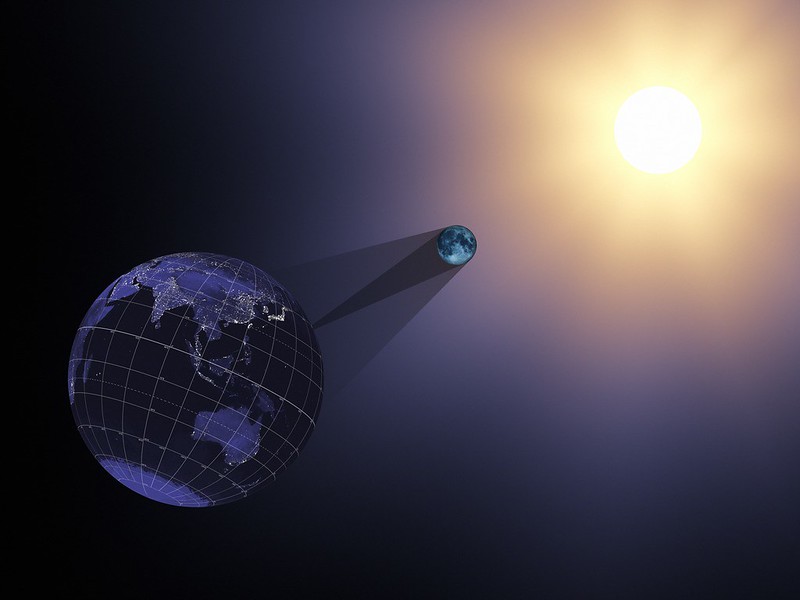
Gabriel Gonzalez, Jacob Gumaer
Student Life Editor, Contributing Writer
An eclipse, where the moon moves between the sun and earth, obscuring the sun, is set to visit April 8, from 2:09-4:35 p.m. according to Nasa’s Eclipse Explorer. It will be a partial eclipse for those in East Stroudsburg, Pa, and ESU will have the most coverage at 3:24 pm at 92.6 percent. At that time, the sun will mirror the look of a moon in its waxing gibbous phase.
Professor of physics, David Buckley explains why it’s so rare: “A total eclipse is so rare because of two things. First, because the Moon’s orbit around the Earth is tilted relative to the Earth’s orbit around the Sun. For example, if you think of the Earth as floating on the surface of a lake as it goes around the Sun (floating on the same lake), then the Moon spends half of its orbit above the lake and the other half below the water! So, most months, when the Moon passes between the Earth and Sun (the phase we call New Moon), it either passes a little too high or a little too low to cast its shadow on the Earth.”
He added, “But even then, the second reason a total eclipse is so rare is that when the Moon’s shadow does reach the Earth, it’s only at most, a couple hundred miles across and traveling across the surface of the Earth at typically about 2000 miles per hour!”
This is the closest eclipse to take place in a couple of years, the last two that hit the United States having missed Pennsylvania in 2017 and 2023. Furthermore, the 2024 eclipse, according to Nasa, is wider. The 2017 eclipse had a width of 62-72 miles, but the 2024 eclipse is projected to have a width of 108-122 miles. And this year, 31.6 million people are projected to be in the path of totality, points where one can view the sun without the aid of eclipse glasses, which is 19.6 million more than 2017’s.
“Unfortunately, the next total solar eclipse to cross the continental US won’t be for 21 years: Aug. 12, 2045!” Professor Buckley says. “Even then, the path of totality won’t pass nearly this close to eastern Pa. You’ll have to drive to Georgia or Florida to see the total eclipse!”
21 years is a long time to wait for anything, especially when it lasts a couple of minutes at its zenith. It’s what makes the experience so important.
Many students remember their last eclipses and look forward to this one.
Calla Sandt, communication major, Canadensis, Pa, recalls her experience in 2017: “My mom got a bunch of glasses that allow you to look at the sun during the eclipse and we sat together and watched the eclipse. It was one of the coolest things I’ve ever seen in my entire life and I’m very excited for this one.”
Teagan Marshal, a psychology major, from Littleton, Colo. remembers his own experience with the phenomena: “It slowly started to get darker and then suddenly it happened, but it wasn’t very dark. It seemed like a cloud covering the sun when it happened. I think it would be cool to see the upcoming eclipse and I’m hoping I don’t miss it.”
For those interested in viewing the eclipse, though the sky won’t be fully dark, the Physics Department will have several solar telescopes and eclipse glass ready to borrow for the event as long as the weather permits.
“As for why students should be interested in this celestial event?” asked Professor Buckley. “I would say because this is a time of life to discover the world around you. And that sometimes includes the other worlds around us!”

